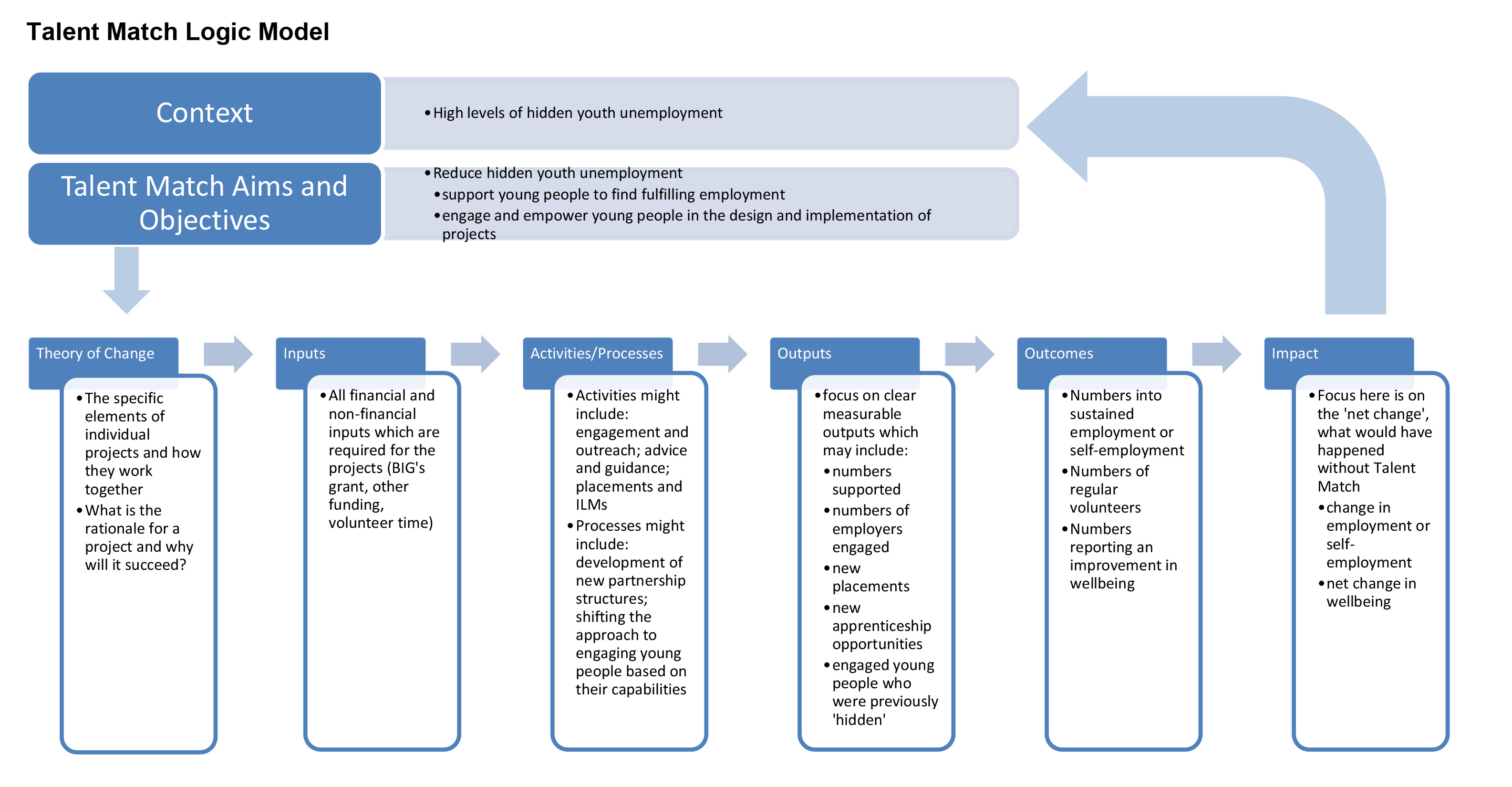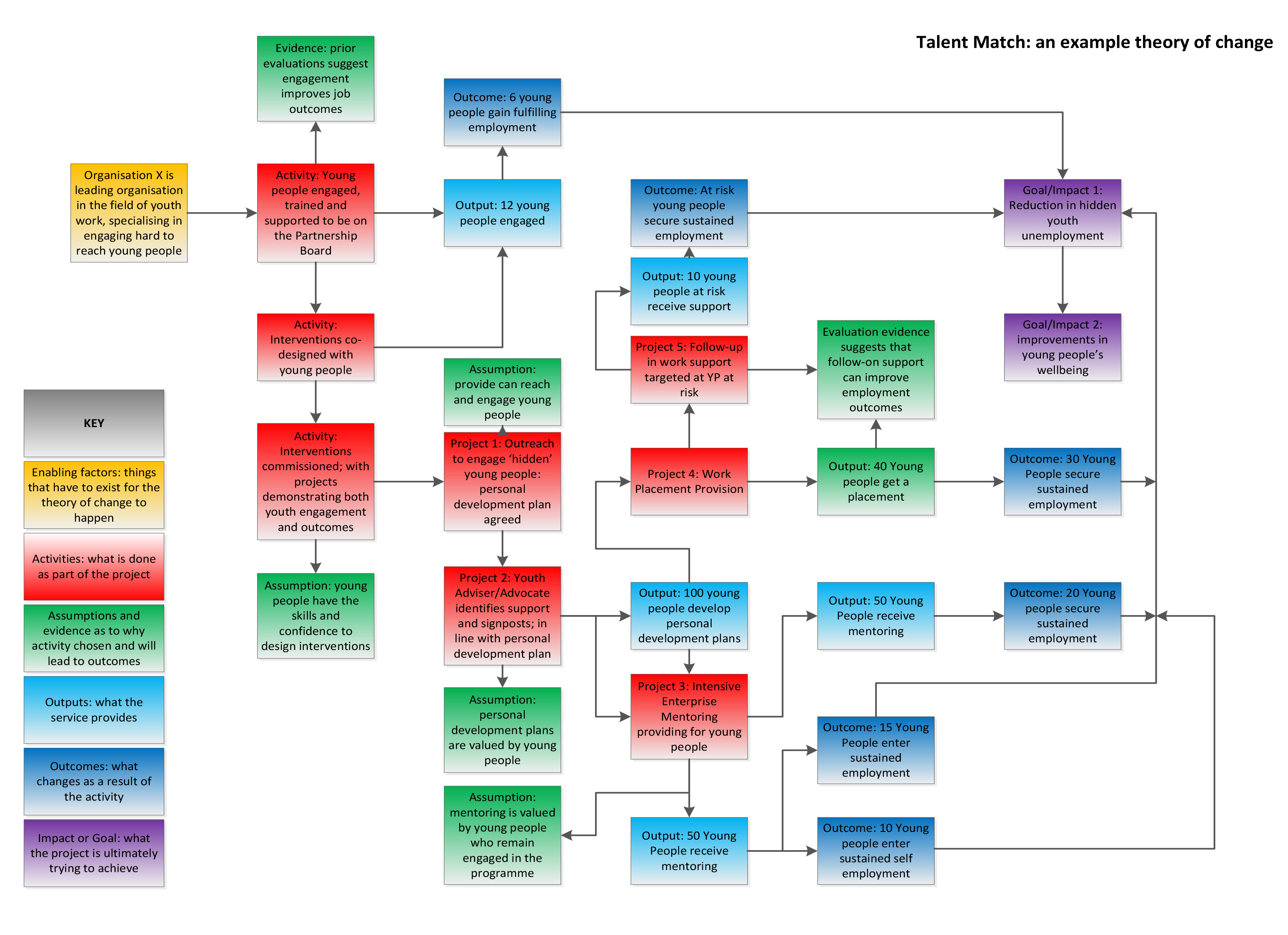Introduction
A principle of the Talent Match programme is ‘test and learn’: the programme seeks to support young people into employment but also inform policy and practice locally and nationally.
Two tools partnerships can use to help do this are logic models and theories of change. Both are similar, use much of the same terminology but have some key differences.
Logic Models
Logic models are very much tools to understand the linear relationships between the costs or inputs of a programme and its outputs, outcomes and impacts (these terms are defined at the end of this note to help with consistency in interpretation). The use of logic models can help partnerships, Big Lottery Fund and the evaluation around the efficiency of programmes (what is directly achieved as result of a certain investment) and effectiveness of programmes (the extent to which the programme achieves its objectives).
The diagram below provides a very simple logic model for the Talent Match programme. Something the evaluation team is working on at the moment will be to better understand the activities of partnerships and how these lead to different outputs and outcomes. As we collect more data and have evidence from our comparator study the evaluation will be able to able to estimate what impact Talent Match has made, and what its value for money has been.
Theories of Change
Of course programmes such as Talent Match are difficult to fit into linear logic model type analysis. For this reason the Big Lottery Fund are keen to answer various ‘how’ and ‘why’ questions. In particular how particular projects work and what makes them work in practice in specific local contexts. This is at the heart of the ‘test and learn’ approach. This is where theories of change can be very useful. Although they use some of the terminology to logic models (activities, outputs, outcomes, impact etc), they are very much about Partnerships setting out what are the key things which they believe make a difference.
The diagram below shows an example of a Theory of Change approach. It draws on some of the types of projects many Partnerships are funding although it is not based on any particular Partnership. We built this around five projects and worked to establish why those projects were chosen and then worked forward to highlight possible outputs, outcomes and impact.
We could have added much more detail to the theory of change. What appears of most importance is identifying some of the key assumptions, rationales and evidence which lie behind the activities and projects. Examples here might include the training and skills of staff, using a particular approach to working with employers, or continuing to support vulnerable young people once they enter employment.
Further Resources
There are lots of resources available on theories of change and logic models. We found the work by New Philanthropy Capital (www.thinknpc.org/publications/theory-of-change/) and Nesta (www.nesta.org.uk/sites/default/files/theory_of_change_guidance_for_applicants_.pdf) to be good starting points. We also think that NPC’s Journey to Employment framework (www.thinknpc.org/publications/the-journey-to-employment/) can help partnerships understand more around possible interventions. The government’s main guide to evaluation is The Magenta Book (www.gov.uk/government/publications/the-magenta-book) which contains extensive guidance on logic models (pp.21-24) theories of change (pp. 55-60).
If you would like further information please get in touch.

